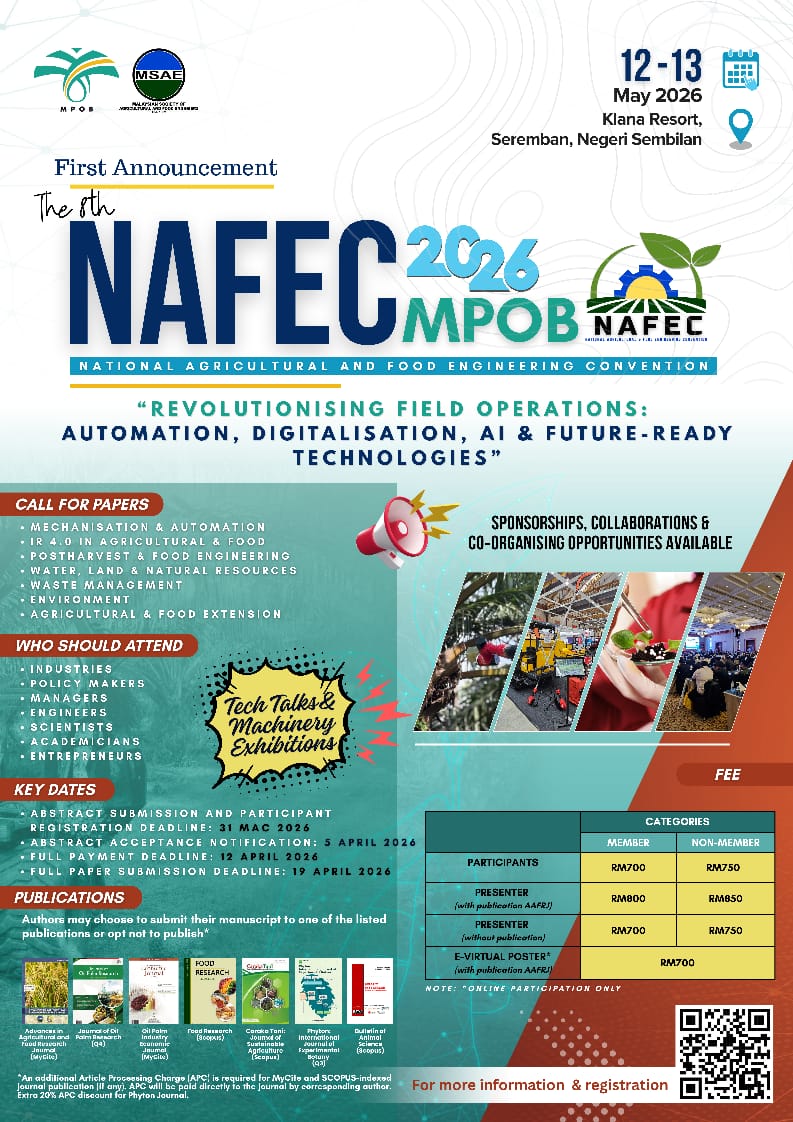Preliminary Evaluation of The Performance of Micro Combine Harvesters in Rice Farming
DOI:
https://doi.org/10.36877/aafrj.a0000484Abstract
Rice is the most widely used staple food, especially in Asia, accounting for about 90% of the world's rice production. In Malaysia, the cultivated area is as much as 730,016 hectares, and the show was about 3.3 million metric tons throughout the country in 2016. Currently, big combine harvesters are used in Malaysia to harvest rice, allowing for quicker harvesting. However, harvesting with a big combine harvester is impossible in areas with soft soil. As a result, employing a micro combine harvester is one of the options for harvesting in areas with soft soil problems. This study aims to evaluate the performance of a micro combine rice harvester. Performance evaluations were conducted at the MARDI Seberang Perai, Penang research plot. The pedestrian-type micro combines harvester with a triangular rubber crawler type was used in this study. The working width of the machine is 1 meter. The rate of harvesting losses is also evaluated as part of the study. The performance test results of the micro combine harvester show that the farm's efficiency is about 70 percent, with a work rate of 0.10 ha/hour. By keeping the harvester's speed at 1.5 km/h, this micro combine harvester's potential work rate is 0.15 hectares per hour. The losses during the harvesting operation were calculated to be 2.2 per cent. The study's results show that using micro combine harvesters can assist in carrying out rice harvesting work in areas where soft soil issues make it challenging to use the standard large combine harvesters. Farmers that grow rice on a small scale also benefit from using this micro combine harvester. The small percentage of losses demonstrated the effectiveness of this micro combine harvester.
Downloads
Published
How to Cite
Issue
Section
License
Copyright (c) 2024 Eddy Herman Sharu, Mohd Taufik Ahmad, Mohd Khusairy Khadzir, Mohd Shahril Shah Mohd Ghazali, Mohamad Fakhrul Zaman Omar

This work is licensed under a Creative Commons Attribution-NonCommercial 4.0 International License.
Author(s) shall retain the copyright of their work and grant the Journal/Publisher right for the first publication with the work simultaneously licensed under:
Creative Commons Attribution-NonCommercial 4.0 International (CC BY-NC 4.0). This license allows for the copying, distribution and transmission of the work, provided the correct attribution of the original creator is stated. Adaptation and remixing are also permitted.

This broad license intends to facilitate free access to, as well as the unrestricted reuse of, original works of all types for non-commercial purposes.
The author(s) permits HH Publisher to publish this article that has not been submitted elsewhere.

.png)

.jpg)



